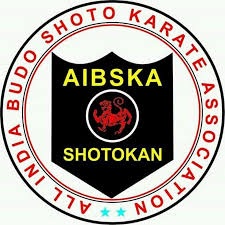
All India Budo Shoto Karate Association
Member of Japan Shotokan Karate Association
Member-British Shotokan Kyogi

Member of Japan Shotokan Karate Association
Member-British Shotokan Kyogi
Karate, the Japanese word for “empty hands,” was born in the Okinawan Islands as a form of self-defense, at a time when weapons were banned by invading Japanese forces. It began as te (hand), a fighting style used by the natives of the Ryukyu Islands, and was later influenced by Chinese kenpō, introduced through the Chinese families that settled on Okinawa after trade relationships between China and the islands were established.
From three Okinawan cities (Shuri, Naha, Tomari), each closely spaced but with very different societal demands, three separate styles emerged:
Shuri-te
Naha-te
Tomari-te
Collectively, these styles were called Okinawa-te or tode (Chinese hand), and over time, the styles merged slightly to become just two: Shōrin-ryū, developed near Shuri and Tomari, and Shōrei-ryū, near Naha.
Because of increasing Japanese influence, the label of "te" was eventually lengthened to karate-jutsu (Chinese hand art). It then changed to karate-do after an Okinawan master altered the meaning of the word kara (also pronounced tode) to mean “empty” rather than “Chinese hand.” karate-do translates into “the way of the empty hand.”
Very little is known of the exact origins of karate before it appeared in Okinawa, but one popular theory states that it came from India over a thousand years ago, brought to China by a Buddhist monk called Bodhidarma (“daruma” in Japanese). As legend describes it, Bodhidarma arrived in Shaolinsi and began teaching Zen Buddhism as well, a style of temple boxing based on exercises designed to strengthen the mind and body. The historical accuracy of this legend is still a hot issue of debate today.
1905 : Karate is included in Okinawa’s physical education programs at the intermediate level.
1917 : Funakoshi gives the first public demonstration of karate-do.
1922 : Funakoshi is invited by Dr. Jano Kano to give a demonstration at the Kodokan Dojo, bringing karate-do to Japan.
1924 : The first university karate club is established in Japan, at Keio University.
1930s : Karate makes its way to Canada.
1936 : Okinawan masters meet to discuss karate in Okinawa, a meeting sponsored by the newspaper Ryukyu Shimpo.
1939 : Japan opens Shoto-Kan, its first formal training school.
1945 : The first dojo is opened in the United States.
1949 : The Japan Karate Association is formed.
1950s : Karate is introduced in the United Kingdom.
1960s : Karate makes its way to the Soviet Union and is banned and unbanned several times over the next three decades.
1964 : France Shotokan Karate is created in France.
1989 : Karate is legalized once again in the Soviet Union.
Gichin Funakoshi : Founder of "Shotokan".
Dr. Jano Kano : Founder of Japanese judo.
Sakukawa Kanga : One of the first Okinawans to study in China.
Itosu Anko : Often called the “grandfather of karate,” brought karate to Okinawan schools and simplified it for increased public acceptance.
Chojun Miyagi : Founder of Goju Ryu style.
Hironori Otsuka : Founder of the Wadō-ryū style.
Kenwa Mabuni : Founder of the Shitō-ryū style.
Today, karate-do is taught all around the world, and though it is often modified and always changing, four distinctive Japanese styles have emerged:
Gōju-ryū
Shitō-ryū
Shotokan
Wadō-ryū
Karate has evolved into a popular and beloved sport. The World Karate Federation (WKF), the largest organization for karate as a sport, has developed a system of common rules and regulations. WKF is recognized by the International Olympic Committee and coordinates with various national olympic committees.
On 28 September 2015, karate was featured on a shortlist along with baseball, softball, skateboarding, surfing, and sport climbing to be considered for inclusion in the 2020 Summer Olympics. On 1 June 2016, the International Olympic Committee's executive board announced they were supporting the inclusion of all five sports (counting baseball and softball as only one sport) for inclusion in the 2020 Games.
Web Japan (sponsored by the Japanese Ministry of Foreign Affairs) claims there are 50 million karate practitioners worldwide, while the World Karate Federation claims there are 100 million practitioners around the world.
